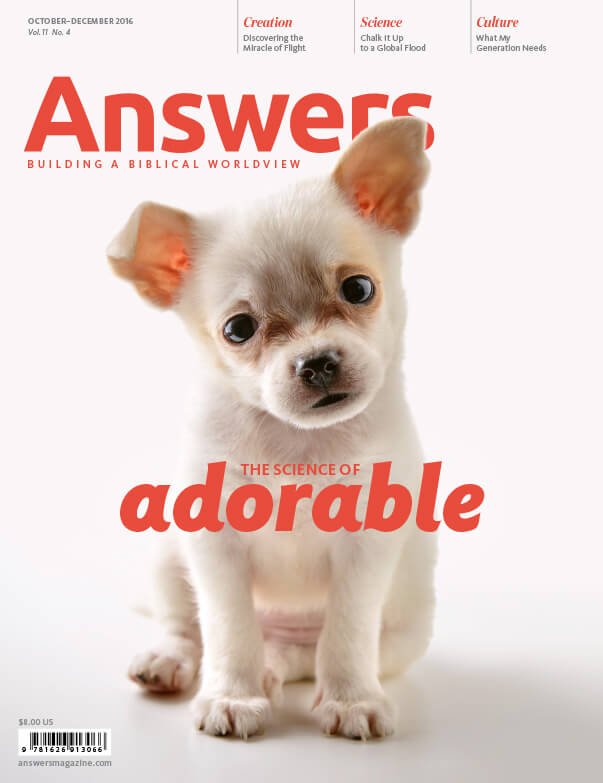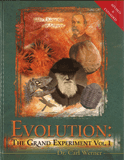
Convergent Evolution or Common Designer?
The world is filled with astonishing examples of similar designs among unrelated creatures. Some people claim this is evidence of the power of evolution, but from a biblical perspective, the astonishing similarity of designs among unrelated creatures is powerful evidence of a Common Designer.
Just looking at them, you might not be able to tell them apart. They’re both creepy crawlies with antennae and hard shells. They both scuttle around on the forest floor and gobble up decaying leaves. Both even roll up into a ball when threatened. So it’s excusable if you confuse a little pill millipede for a pill bug (also called a roly-poly or woodlouse). They might as well be siblings, they look so similar.
But here’s the kicker—you knew this was coming—they’re not related at all. Despite its name, a pill bug is a type of crustacean, like the lobster or shrimp on your plate. Most crustaceans prefer an aquatic home, but the pill bug lives on land quite nicely. On the other hand, pill millipedes are, well, millipedes, and they belong to a completely different classification of animals, called myriapods, which include centipedes and live only on land.
That leads us to some interesting questions. We see that pill bugs and pill millipedes are incredibly similar on the outside. But by studying these creaturesʼ bodies, biologists have learned that they’re not as similar as they first appear. They belong to radically different taxonomic ranks, known as subphyla. (If you were taking notes during science class, that’s just under kingdoms and phyla.) So they are considered unrelated by both creationists and evolutionists, and yet they’re shockingly similar.
So what does this consistent sameness reveal about our world? That depends on your starting point.
Things get very interesting when we ask, “Why?” Why should these two unrelated creatures look and act almost exactly the same? How did this come about?
The conundrum is compounded by the fact that biologists are discovering this phenomenon at nearly every level of biology. When they zoom in, they find these “similar but different” designs in the tiny molecules that make up unrelated cells—even those separated into different kingdoms, such as animals and plants. And they find similar complex organs and organ systems within unrelated animals (in different classes, like fish, reptiles, birds, and mammals!).
This truly happens everywhere. Evolutionary paleontologist Simon Conway Morris of Cambridge writes in Runes of Evolution (2015) that this phenomenon occurs at all levels of creation, not only in the organic molecules and body forms of creatures, but at the larger scale of entire ecosystems (similar biomes like the plains of Africa and the American West). He even sees “similar but different” in the development of species’ behavior, including the rise of similar human civilizations on different continents.
Charles Darwin expected natural selection to produce “endless forms,” but instead the evidence points to a more limited range of the same, or very similar, forms appearing repeatedly in many unrelated creatures. So, what does this consistent sameness reveal about our world? That depends on your starting point.
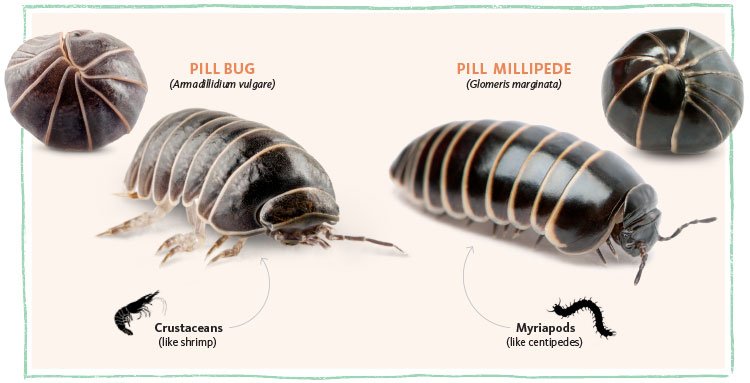
Similar Blueprints: By Accident or Design?
The earth is full of unrelated creatures that have similar body plans. Take pill bugs and pill millipedes. Donʼt they look similar? But if you look on the inside, one resembles a shrimp and the other a centipede! Clearly this is the handiwork of one Designer.
Not What Darwin Expected
A growing number of evolutionists, such as Conway Morris, propose that evolutionary pathways are limited. It’s as if there are guardrails that keep the process within set “roads.” So evolution continually produces similar solutions to problems at every level. For Conway Morris, this extends all the way to alien life. He tells us that we should not expect otherworldly green aliens, but plants and animals with designs similar to those on earth, including intelligent beings with brains and cultures similar to ours.
From an evolutionary perspective, that’s not a surprising inference. After all, we see similar designs in both the world today and the fossil record. These similarities go far down the fossil layers. So you can see why evolutionists might presume that the rules of our universe constrain what’s possible for physical development and functions; some yet-undefined rules produce similar designs over and over. It’s an idea called convergent evolution. Conway Morris admits that this is surprising, and not what Darwin expected.
Notice what this means. It doesn’t actually explain how evolution works or how likely it is. It just concludes that if it works, then it does a great job regularly producing similar solutions over and over. Somehow, nature just “prefers” the similar shape and function of unrelated vultures in Africa and America or the striking parallels between the large cats, such as lions, and the mongoose-like fossa of Madagascar.
Evolutionists are still trying to work out what these rules of “convergent evolution” might be—the details about how natural selection could produce these patterns and why this should happen. And people like Conway Morris are convinced that they can be found. But what if there’s something here that we’re meant to understand that’s much more amazing than simply naturalistic patterns? For those of us who see the hand of a Creator in the universe, similarities point to something else—they point to the invisible.
The Fingerprint of God?
According to the Bible, no one can see God the Father (Colossians 1:15). We can’t taste Him, smell Him, or experience Him with any of our outward senses. We’re limited; He’s infinite. We’re fallen and sinful; He’s perfect. There’s a gulf between Him and us that we could never cross on our own.
But what’s amazing about our invisible God is that He
really wants us to know Him. He gave us His written Word,
the Bible, so that we could understand who He is and how
much He loves us. More broadly, though, His “invisible attributes
are clearly seen, being understood by the things that
are made, even His eternal power and Godhead
” (Romans
1:20). Put simply, all this—the whole universe—tells us about
His wisdom, His power, His beauty, and His goodness that
we read about in Scripture. That’s why sunsets take our
breath away, flowers smell so lovely, and our planet sits in
the perfect spot for us to gape into space. None of these is
essential to our survival, but their unexpected grandeur
gives us a glimpse into who God is.
Really, that’s only scratching the surface. The Creator of Genesis 1, the all-powerful One of Psalm 115, the great King of Revelation 21—He knows how to leave His copyright notice on the things He’s made. Because of His love for us, not only does He want us to know that He exists, He wants us to discover reflections of His personality and purpose in all He designed. From microscopic bacteria to massive blue stars, the universe resonates with signs pointing to His attributes.
What if all the convergence we find in the world works this way as well? After all, it is very reasonable and satisfying to believe that God sprinkled the biological world with “similar but different” features to help us understand more about Him. He is a complex, wonderful being, existing as three persons who are one—that’s what “trinity” (or “triunity”) means. He isn’t distant or unknowable; He’s near to those who seek Him (Isaiah 55:6). That means all these similarities aren’t infinite, unrelated, random patterns. Instead, He placed complex but discernible patterns all over that show similarity and diversity. In turn, these point back to the attributes of their three-in-one Maker. It’s sort of like He stamped His fingerprint over and over on creation so that we couldn’t miss it.
Just like evolutionists, creationists are greatly interested in understanding what these patterns might mean. We’re early in the work, but a few things have already become clear about how creation reflects God’s divine nature (that’s another way to say “Godhead” as in the verse from Romans above). In particular, we’re seeing that one mind with one purpose is behind all the things He creates. He is working all things according to His perfect plan, where all the parts come together toward a unified end.
This is not the same as the shallow Sunday school claims that God used the three dimensions—length, width, and height—to illustrate the Trinity. Or that ice, water, and steam illustrate the Trinity. No, this view recognizes that converging designs really do exist, and even evolutionists recognize these patterns and write books to explain them. Because Christians know by faith that God is behind creation, they recognize He has an underlying purpose, and they want to know what it is.
Now, narrowing it down to one simple reason for these patterns would be tough. After all, our Creator is complex and multifaceted, and we would expect His motives to be similarly complex—not to mention that we can’t completely know His mind. In fact, it can seem difficult to distinguish between the various explanations for “similar but different” elements in creation. But examining each one separately allows us to see both the strength of each part and the beauty of the whole. Teasing them apart gives us a deeper appreciation for the One who designed these patterns.
Think of it like examining a multifaceted diamond, one facet at a time. Each facet defines part of the beauty of the whole, but the whole diamond has its own beauty that is not described simply by looking at the parts! The same is true of all these elements of convergence within creation. They point to a Creator who made things (a) artful, (b) thoughtful, (c) purposeful, and (d) well designed in their parts. But they also have these elements as they are combined into larger pieces that display new examples not found in the parts. The wonder of the whole is much greater than the sum of its parts.
For now, let’s just focus on things from a design perspective.
The Master Engineer
We find similarities in animals and plants all over the place. Wherever you turn, unrelated creatures rhyme with similar designs to make their home in our diverse world. It’s a beautiful symmetry that points to a common hand crafting everything. The intricate structures reflect the fact that there’s one Maker who’s a master engineer. He formed all living things out of the same batch of chemicals, for example, giving every one of them similar genetic code and similar cell structures. Human designers do the same thing—integrating similar parts in different things they design.
This masterful similarity starts at the most basic level of living organisms—right down to their genetic code. All living things have four basic building blocks called nucleotides, and in groups of three, they code for around 20 amino acids, which, in turn, are the building blocks for many, many different types of proteins. You could think of this as being similar to letters (amino acids) that make up words (proteins). Creatures from bacteria to whales rely on this same alphabet. It’s a common language spoken into existence by a common Designer (Genesis 1).
Wherever you turn, unrelated creatures rhyme with similar designs. The intricate structures reflect the fact that thereʼs one Maker whoʼs a master engineer.
Moving up from there, we also find a striking similarity (with diversity) within the cells of living things. For example, plants, algae, and cyanobacteria all have structures within their cells that allow them to take in sunlight and produce energy. And more broadly the cells in plants, fungi, and animals contain organelles (sort of like tiny “organs”) that work together to keep every living thing alive. Once again, these intricate marks of engineering point us to an Engineer.
But you don’t have to look through a microscope to see convergent creation. God’s diverse repetition shows up in some much more obvious—and furry—ways. You can see it in the common adaptations our Creator programmed into two unique animals: the meerkat (related to mongooses) and the prairie dog (a rodent).
Although the two are separated by the Atlantic Ocean, they mostly share a similar habitat with few trees but a lot of flat ground. Since there’s no upward escape from predators, both meerkats and prairie dogs have bodies perfectly suited for digging down to make complex tunnel cities. Small ears and short fur make them sleek and streamlined (and really cute), and sharp claws zip through soil. Sentries in both species give a warning bark (so much for the “–kat” in the name), and both prefer to be grouped in social structures.
We find even more furry resonance when we examine three very distinct but very similar flying mammals. If you live in the United States, perhaps you’ve seen a quick little rodent that can take a leap from one tree, spread out the flaps that connect from wrist to ankle, and glide to the next tree. But you don’t have to be in North America to see a mammal like that. In Australia, sugar gliders (a marsupial) soar in a similar fashion and even have surprisingly similar physical features. Up in Asia, the unrelated colugos (or flying lemurs) make use of similar skin-stretching aerodynamics and body plan to survive in the rain forest. Such a solution found in three distinct mammals really gives flight to the idea that a master Creator came up with some creatively unique solutions to the same problems.
You could even go bigger than this. Designed similarity extends to the very environments where these animals live. Whether it’s plains, deserts, shorelines, or woodlands, the characteristics of the area (hot, grassy, rocky, etc.) echo across continents. This creates similarities in the types of pressures that animals face and the types of adaptations needed to survive.
That’s big thinking from a big God at work.
Similar Yet Different
The world is full of similar designs in unrelated creatures. Evolutionists believe they evolved more than once. Creationists credit a common Designer.
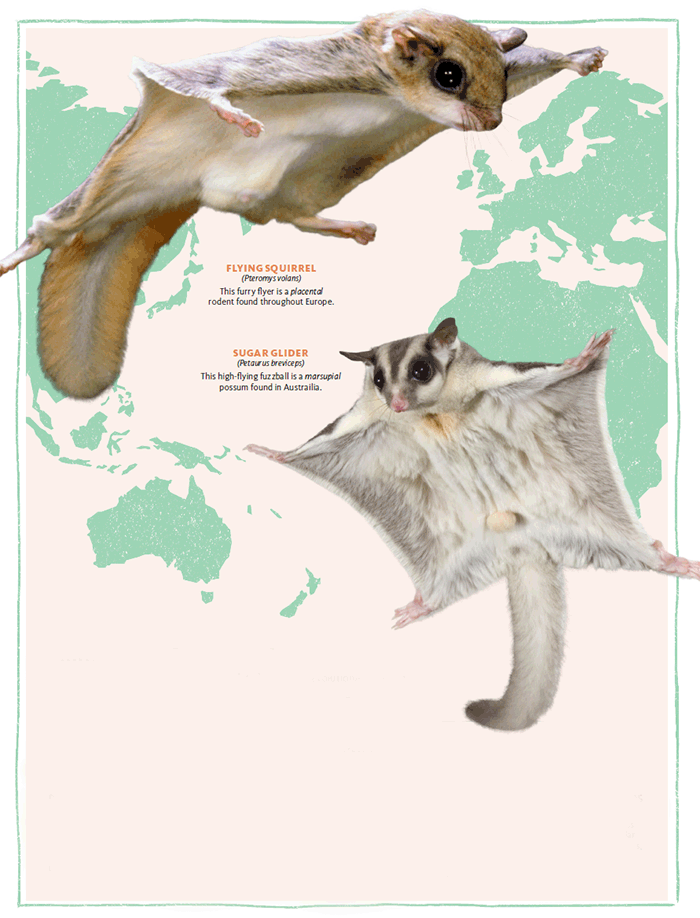
Flying Squirrel (Pteromys volans): This furry flyer is a placental
rodent found throughout Europe (top).
Sugar Glider (Petaurus breviceps): This high-flying fuzzball is a marsupial
possum found in Australia (bottom).
Other Amazingly Similar Designs . . .
Similar designs appear in unrelated creatures all over the world. Even evolutionists agree that these designs arose independently, such as the sleek bodies of dolphins (mammals) and sharks (fish).
Prairie Dogs (Cynomys) North Americaʼs prairies are dotted with communities of cute rodents from the order Rodentia.
Meerkats (Siricata) The deserts of southern Africa have communities of cute mammals from the order Carnivora.
Sharks (numerous families) The world’s oceans are full of sleek finned sharks from the superorder Selachimorpha.
Dolphins (four families) The world’s oceans are full of sleek finned mammals from the order Cetacea.
Snakes (numerous families) The earth is filled with a variety of slithering snakes in the suborder Serpentes.
Legless Lizards (family Pygopodidae) Australia has legless reptiles more similar to geckos than snakes, in the suborder Gekkota.
Where It All Comes Together
Patterns in living things make sense, and they make sense because our Creator delights in variations on a common blueprint. That’s what we’d expect from our three-in-one God who wants us to know Him and reveals Himself in these “similar but different” characteristics all around us. There’s diversity but unity in Him—there’s diversity but unity in His creation.
To be sure, evolutionists will also continue to discover similar patterns in nature. Such intriguing wonders are hard to miss. But they’ll chalk them up to convergence via natural selection. Sadly, while they will look for patterns in radio waves to suggest that alien life could be out there (as Conway Morris suggested), they miss the evidence of intelligent patterns much closer to home—and those have a much stronger signal.
God wants us to know Him. He revealed Himself in an inspired book (the Bible), in the patterns we see in the universe He created, and—even more amazingly—in the person of His Son, Jesus (Hebrews 1). Studying converging design can help us enjoy displays of some of His characteristics, but nothing can begin to compare to the glory of looking to Jesus Himself, revealed in His Word, which gives us the most important revelation of all.
Similar Yet Different
The world is full of similar designs in unrelated creatures. Evolutionists believe they evolved more than once. Creationists credit a common Designer.
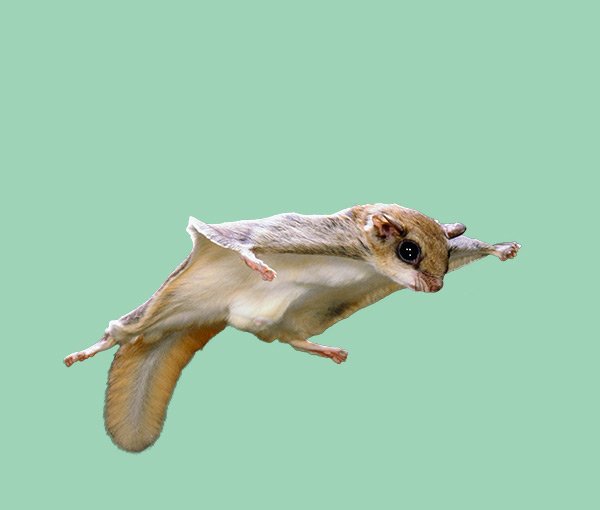
Flying Squirrel (Pteromys volans): This furry flyer is a placental rodent found throughout Europe (top).

Sugar Glider (Petaurus breviceps): This high-flying fuzzball is a marsupial possum found in Australia (bottom).
Other Amazingly Similar Designs . . .
Similar designs appear in unrelated creatures all over the world. Even evolutionists agree that these designs arose independently, such as the sleek bodies of dolphins (mammals) and sharks (fish).
Prairie Dogs (Cynomys) North Americaʼs prairies are dotted with communities of cute rodents from the order Rodentia.
Meerkats (Siricata) The deserts of southern Africa have communities of cute mammals from the order Carnivora.
Sharks (numerous families) The world’s oceans are full of sleek finned sharks from the superorder Selachimorpha.
Dolphins (four families) The world’s oceans are full of sleek finned mammals from the order Cetacea.
Snakes (numerous families) The earth is filled with a variety of slithering snakes in the suborder Serpentes.
Legless Lizards (family Pygopodidae) Australia has legless reptiles more similar to geckos than snakes, in the suborder Gekkota.
Answers Magazine
October–December 2016
Your irresistible urge to snatch up that cute little puppy and hug it for all youʼre worth isnʼt just a feeling. Itʼs science.
Browse IssueRecommended Resources

Answers in Genesis is an apologetics ministry, dedicated to helping Christians defend their faith and proclaim the good news of Jesus Christ.
- Customer Service 800.778.3390
- Available Monday–Friday | 9 AM–5 PM ET
- © 2026 Answers in Genesis


